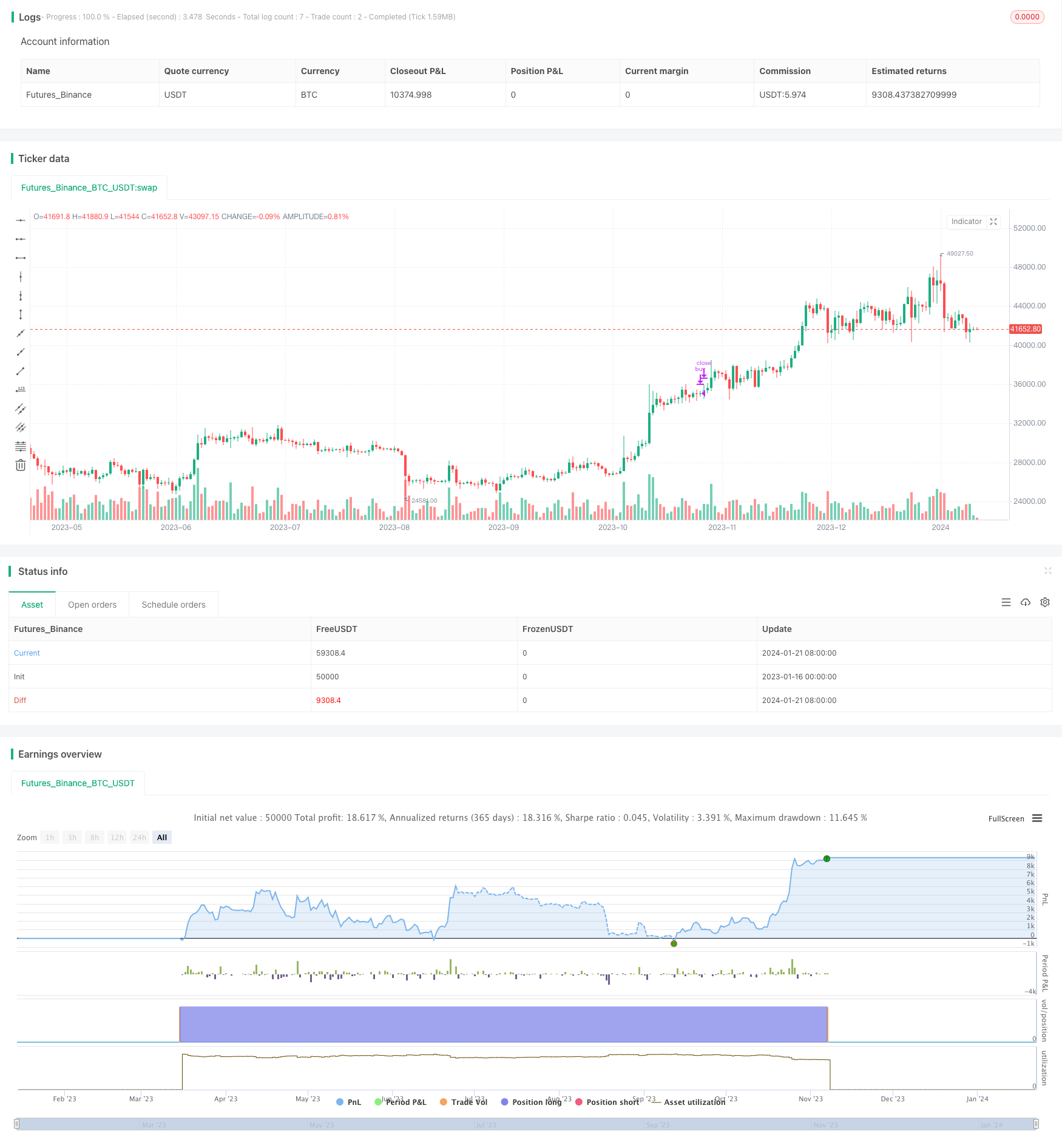
概述
该策略通过计算MACD和RSI这两个指标的交叉,产生交易信号。当RSI超买超卖时,在MACD金叉死叉发生时,产生买入和卖出信号。该策略结合了两种不同类型指标的优点,既考虑了价格的趋势性,也结合了超买超卖情况,从而提高策略的效果。
策略原理
该策略主要利用MACD和RSI这两个指标的组合来产生交易信号。其中,MACD一般用来判断价格趋势和动量变化,RSI一般用来判断超买超卖情况。
该策略首先计算出MACD的快慢均线和信号线。快线大于慢线产生金叉信号,快线小于慢线产生死叉信号。这表示价格的趋势和动量正在发生变化。
同时,该策略计算RSI指标,并设定超买线和超卖线。当RSI低于超卖线时表示超卖,当RSI高于超买线时表示超买。
在RSI超买超卖的情况下,策略在MACD金叉时产生买入信号,在MACD死叉时产生卖出信号。也就是在价格趋势发生转折的时候,利用MACD指标的灵敏度来捕捉转折点。而RSI指标的作用是避免在没有超买超卖的情况下发生错误交易。
优势分析
该策略结合MACD和RSI两个指标的优势,可以提高策略的效果。
MACD指标能敏感捕捉价格变化,RSI指标考虑超买超卖情况,两者互补。
结合两个指标,可以过滤掉一些噪音交易信号,减少不必要的交易。
MACD统计价格平均数差值,RSI统计价格变化比例,两种方法可以互相验证。
MACD反应价格变化迅速,RSI反应价格背离比较明显,组合使用效果好。
风险及解决
该策略也存在一定的风险需要注意:
MACD和RSI都易受突发事件影响,可能产生错误信号。可以适当调整参数,过滤信号。
单一股票效果可能不佳,可以考虑指数或组合使用。
需要同时满足MACD交叉和RSI超买超卖条件才发出信号,可能错过部分机会。可以适当降低RSI参数要求。
优化方向
该策略还可以从以下几个方面进行优化:
优化MACD和RSI的参数,使其更符合不同品种的特点。
增加止损策略,在亏损达到一定比例时及时止损。
结合其他指标,例如布林带、KDJ等,设定更严格的交易信号条件。
在高频数据上运行策略,利用MACD的快慢特性,提高策略效果。
根据回测结果,调整RSI的超买超卖线,寻找最佳参数组合。
总结
该MACD与RSI交叉策略,结合了趋势跟踪和超买超卖判断,可以有效获取价格转折点,增强策略效果。但也存在一定局限,仍需根据市场行情不断测试与优化,方能充分发挥策略效果。
/*backtest
start: 2023-01-16 00:00:00
end: 2024-01-22 00:00:00
period: 1d
basePeriod: 1h
exchanges: [{"eid":"Futures_Binance","currency":"BTC_USDT"}]
*/
//@version=5
// © sabirt
strategy(title='MACD and RSI', overlay=true, shorttitle='MACD&RSI')
//MACD Settings
fastMA = input.int(title='Fast moving average', defval=12, minval=1)
slowMA = input.int(title='Slow moving average', defval=26, minval=1)
signalLength = input.int(9, minval=1)
//RSI settings
RSIOverSold = input.int(35, minval=1)
RSIOverBought = input.int(80, minval=1)
src = close
len = input.int(14, minval=1, title='Length')
up = ta.rma(math.max(ta.change(src), 0), len)
down = ta.rma(-math.min(ta.change(src), 0), len)
rsi = down == 0 ? 100 : up == 0 ? 0 : 100 - 100 / (1 + up / down)
wasOversold = rsi[0] <= RSIOverSold or rsi[1] <= RSIOverSold or rsi[2] <= RSIOverSold or rsi[3] <= RSIOverSold or rsi[4] <= RSIOverSold or rsi[5] <= RSIOverSold
wasOverbought = rsi[0] >= RSIOverBought or rsi[1] >= RSIOverBought or rsi[2] >= RSIOverBought or rsi[3] >= RSIOverBought or rsi[4] >= RSIOverBought or rsi[5] >= RSIOverBought
[currMacd, _, _] = ta.macd(close[0], fastMA, slowMA, signalLength)
[prevMacd, _, _] = ta.macd(close[1], fastMA, slowMA, signalLength)
signal = ta.ema(currMacd, signalLength)
avg_1 = math.avg(currMacd, signal)
crossoverBear = ta.cross(currMacd, signal) and currMacd < signal ? avg_1 : na
avg_2 = math.avg(currMacd, signal)
crossoverBull = ta.cross(currMacd, signal) and currMacd > signal ? avg_2 : na
strategy.entry('buy', strategy.long, when=crossoverBull and wasOversold)
strategy.close('buy', when=crossoverBear and wasOverbought)